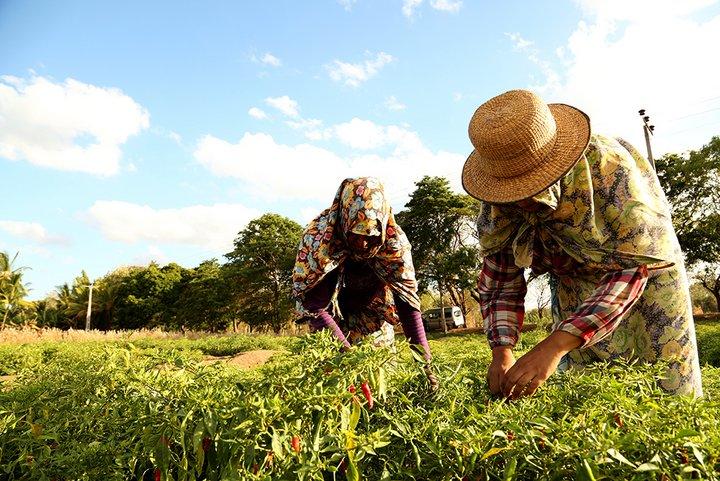What has agricultural biodiversity ever done for us?

Bioversity International scientist Simon Attwood explains how the use of agricultural biodiversity can make our diets healthier, and agriculture more resilient and sustainable.
The blog highlights the main issues discussed in Chapter 3 of 'Mainstreaming Agrobiodiversity in Sustainable Food Systems', a new Bioversity International book that provides solid evidence that investments in agricultural biodiversity play a critical yet overlooked role in tackling global targets such as reducing poverty and malnutrition, reversing environmental degradation and combatting climate change. The book was presented on 11 October 2017 at the 44th Committee on World Food Security in Rome, Italy.
By Simon Attwood
Global biodiversity is vast! An online search for ‘biodiversity’ delivers over 60 million results. Estimates of total numbers of species range from a few million to 1 trillion! There are about 400,000 plant species, not to mention an estimated 1.1 million beetles, 600,000 arachnids and 200,000 molluscs. There is evidently a lot of biodiversity about, but what does it actually do? More to the point, what does it do for us?
What is agricultural biodiversity?
Basically, it’s the variety and variability of animals, plants and micro-organisms that are used directly or indirectly for food and agriculture.
So, agricultural biodiversity can encompass crop varieties within a species (for instance, the 1000s of varieties of quinoa, and over 4,000 varieties of potato), different crops, different land-use types in mosaic landscapes, species and breeds of livestock, farmed fish species, a vast array of wild biodiversity – from insects that pollinate crops, to crop wild relatives, to myriad soil biota. All very impressive, but what does it actually do for us?
First, agricultural biodiversity provides us with food.
Agricultural biodiversity gives us an enormous variety of food, not just countless tonnes of the same food. This translates into nutritious and healthy diets packed with micronutrients, a library’s worth of delicious recipes, and the unique cultural heritage of local and regional food, and the stories and traditions that are woven into that.

Second, agricultural biodiversity can help reduce losses of crops from pests and diseases
Pests and diseases are a constant issue for farmers, and one of the major causes of crop loss. When crop diversity is reduced, the chances of crop pest and disease outbreaks increases. However, high levels of agricultural biodiversity can help suppress or reduce pest and disease frequency and intensity.
For instance, increasing the number of crop varieties or crop species in a field or farm (e.g. through intercropping, rotation or diversification at the field scale) can reduce the chances of pests finding the target crop plants, reduce movement of pests, increase the numbers and diversity of predators and parasites that prey upon pests, and decrease the mobility of pests. All of these can lead to reduced damage to crops.
Third, agricultural biodiversity can have beneficial effects on soil function.
For instance, planting several species (such as mixtures of grass and legume species) can increase soil nitrogen (which in turn can reduce the need for costly inorganic fertilizers), reduce weed invasion through increased soil cover, lead to higher moisture retention in the soil, stabilize the soil (thus reducing erosion), and increase soil biodiversity and the many useful ecological functions associated with that (e.g. nutrient cycling).
Fourth, high agricultural biodiversity can be beneficial for wild biodiversity.
Farms with high agricultural biodiversity tend to be more complex and therefore provide habitat and resources for wild species. Also, because agricultural biodiversity can help suppress pests and diseases, and provide natural soil fertility, this can reduce the need for agrochemical application, which can in turn reduce the impact on adjacent native vegetation, such as forests and wetlands. This can have positive feedback, with increased wild biodiversity leading to increased pollination rates.
The relationships between elements of agricultural biodiversity are as varied and complex as the biodiversity itself. How these elements interact is the key to integrating highly productive agricultural systems, nutritious diets and environmental sustainability.

